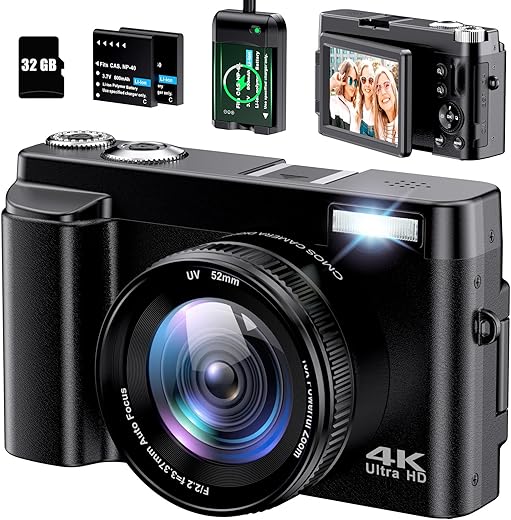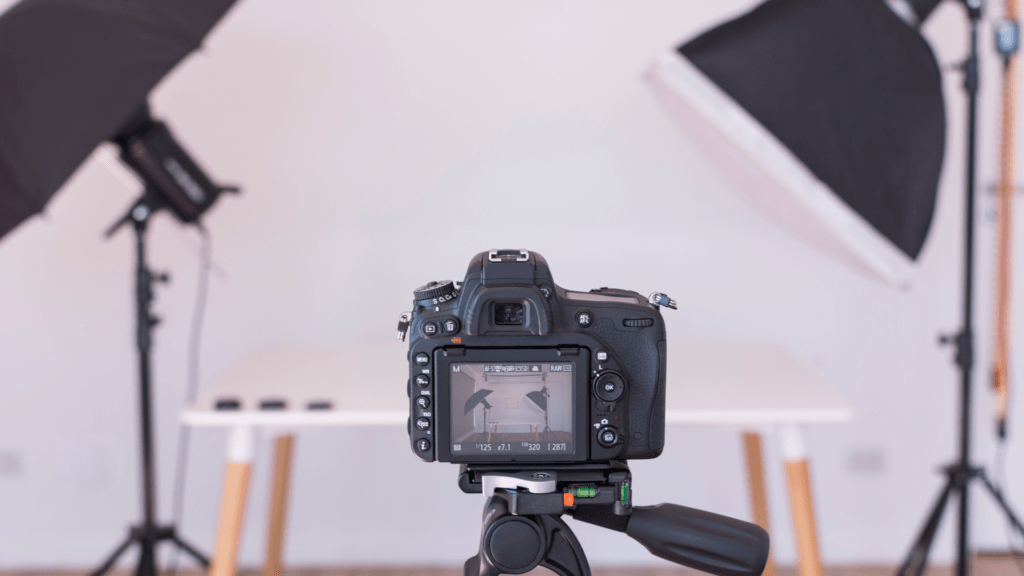As a fellow photography enthusiast, I understand the frustration of wanting to capture those enchanting moments in low light but feeling limited by budget constraints. The good news is that with advancements in technology, you don’t need to spend a fortune to achieve impressive results. In this blog post, I’ll explore some of the best budget cameras tailored for low light photography, ensuring you can seize the beauty of evening landscapes, dimly lit events, and atmospheric scenes without stretching your wallet. Join me as we delve into options that offer exceptional performance at an affordable price, empowering you to elevate your photography game in any lighting condition.
Understanding Low Light Photography
Low light photography is a specialized field that focuses on capturing well-exposed images under dim lighting conditions. This type of photography can present several challenges, as light becomes a precious commodity, and photographers must utilize specific techniques and equipment to achieve remarkable results. In this section, we will explore these challenges and discuss the critical elements—sensor size, lens aperture, and shutter speed—that play a significant role in producing high-quality images in low-light environments.
Challenges in Low Light Photography
Photographing in low light can be daunting for many photographers, as the lack of adequate lighting leads to several potential issues:
- Motion Blur: When the shutter speed is too slow, moving subjects can appear blurred in photographs.
- Noise Reduction: Higher ISO settings may create unwanted noise, resulting in grainy images, which can diminish overall quality.
- Focusing Difficulties: Autofocus systems can struggle in low light, making it challenging to achieve sharp images. Manual focusing may be required in extreme cases.
These challenges necessitate a combination of technique and equipment tailored for low light conditions.
Importance of Sensor Size
The sensor size of a camera significantly impacts its performance in low light settings. Larger sensors can capture more light, leading to better image quality and less noise. Here’s a quick rundown:
- Full-Frame Sensors (e.g., Canon EOS 5D Mark IV, Nikon D850):
- Capture more light, resulting in better-quality images with enhanced detail and reduced noise at high ISO settings.
- APS-C Sensors (e.g., Fujifilm X-T4, Nikon D7500):
- Offer decent performance, but may require careful management of ISO to prevent noise in dim environments.
- Micro Four Thirds Sensors (e.g., Panasonic Lumix GH5, Olympus OM-D E-M1 Mark III):
- Generally exhibit more noise at high ISO levels, thus requiring faster lenses to compensate.
Lens Aperture: The Gateway to Light
A lens’s aperture plays a crucial role in how much light reaches the sensor. The wider the aperture (lower f-stop number), the more light is allowed in, which is vital for low-light photography.
For example:
- Canon EF 50mm f/1.8 STM:
- Wide aperture lets in a lot of light and is an affordable choice for beginners wanting to explore low-light shots.
- Nikon AF-S NIKKOR 24mm f/1.4G ED:
- A high-performance lens favored by professionals, delivering excellent sharpness and minimal distortion in poor lighting.
Comparing Aperture Size and Light Gathering Ability
| Aperture (f-stop) | Light Gathering Ability | Use Case |
|---|---|---|
| f/1.4 | Excellent | Night photography, indoor events |
| f/2.8 | Good | Dusk, dawn, and shaded areas |
| f/4 | Moderate | Sunset or twilight |
| f/5.6 | Limited | Well-lit environments |
Shutter Speed: Freezing Motion
Shutter speed measures how long the camera shutter remains open to allow light to hit the sensor. In low light situations, photographers often have to balance between capturing enough light and preventing motion blur.
For clear images in low light, consider the following:
- Use a Stabilizer: Employ tripods like the Manfrotto Befree Advanced or GITZO Traveler Series to minimize camera shake during longer exposures.
- Fast Shutter Speed: Capture sharp images even when there’s movement; however, this often requires wider apertures or higher ISO settings for sufficient exposure.
Example Settings for Low-Light Conditions:
- Essentials: 1/60 sec, f/2.8, ISO 1600 (for static subjects)
- Fast Motion: 1/250 sec, f/4, ISO 3200 (for moving subjects)
Practical Tips for Low Light Photography
- Stabilization: Always use a tripod or a stable surface for longer exposures.
- Use Manual Focus: If autofocus struggles, switch to manual focus for precise control.
- Experiment with ISO: Test different ISO settings to find a balance that works for your camera; newer models like the Sony A7 IV perform exceptionally well at higher ISOs.
- Post-Processing: Use software like Adobe Lightroom or Capture One to reduce noise and enhance details after capture.
By understanding the intricacies of low light photography—including the critical roles played by sensor size, lens aperture, and shutter speed—photographers can push the boundaries of their creativity and produce stunning images in even the dimmest environments.
Key Features to Look for in Budget Cameras
Low light photography can be a challenging yet rewarding genre for photographers. When selecting a budget camera, it’s crucial to prioritize certain features that will significantly enhance your capability to capture stunning images in dimly lit environments. Here’s a detailed guide on the essential features to consider, especially if you aim to maximize your budget.
ISO Performance
ISO measures your camera sensor’s sensitivity to light. In low light conditions, a higher ISO setting can help capture exposure without needing to rely heavily on slower shutter speeds or wide apertures.
Considerations for ISO Performance:
- Range: Look for cameras that offer a wide ISO range. For effective low light photography, a range starting from ISO 100 up to 6400 or higher is recommended.
- Noise Control: Higher ISO settings can introduce noise, so look for cameras that perform well in noise reduction.
Recommended Products:
- Canon EOS Rebel T7 (EOS 2000D): This entry-level DSLR offers an ISO range of 100-6400, which can be expanded to 12800, providing flexibility in dim conditions.
- Nikon D3500: Similar in price to the Canon EOS Rebel T7, it features an ISO range of 100-25600, allowing for cleaner images in low-light settings.
Image Stabilization
Image stabilization (IS) helps reduce blur caused by camera shake, especially when using slower shutter speeds. It is particularly important in low light scenarios where longer exposures are often needed.
Types of Stabilization:
- Optical Image Stabilization (OIS): Used in lenses to compensate for camera movement.
- In-Body Image Stabilization (IBIS): Stabilizes the camera sensor itself, benefiting any attached lens.
Recommended Products:
- Olympus OM-D E-M10 Mark III: This mirrorless camera features in-body stabilization that allows for up to 4 stops of correction, making it easier to shoot in low light.
- Panasonic Lumix G7: This camera is equipped with Dual Image Stabilization (both OIS and IBIS), perfect for handheld shooting in challenging lighting conditions.
Autofocus Capabilities
Fast and accurate autofocus is essential in low light, where visibility can be limited. Look for cameras with good low-light autofocus performance.
Autofocus Features to Check:
- Phase Detection vs. Contrast Detection: Phase detection is generally faster and better in low light.
- Number of Focus Points: More focus points can help ensure your subject is locked in focus, even in challenging lighting.
Recommended Products:
- Sony Alpha a6000: This mirrorless camera boasts a hybrid autofocus system that combines 179 phase-detection points and 25 contrast-detection points, performing impressively in low light.
- Fujifilm X-T200: While a budget-friendly option, it features a good autofocus system with face detection, allowing for quick focus even in dark settings.
Lens Options
A camera’s ability to capture quality images in low light is heavily influenced by the lens used. Wider apertures allow more light to hit the sensor, making them ideal for low-light photography.
Key Aspects of Lens Options:
- Aperture Size: Look for lenses with a large maximum aperture (e.g., f/1.8, f/1.4).
- Interchangeability: Consider whether the camera allows you to use different lenses, especially ones designed for low light.
Recommended Products:
- Canon EF 50mm f/1.8 STM: Often called the “nifty fifty,” this lens offers a fast aperture for Canon DSLR cameras and is exceptionally budget-friendly.
- Nikon AF-S DX Nikkor 35mm f/1.8G: An excellent lens for low light photography, compatible with Nikon’s DX-format cameras.
In summary, choosing a budget camera for low light photography involves careful consideration of several key specifications. Prioritizing ISO performance, image stabilization, autofocus capabilities, and suitable lens options will enable photographers to capture beautiful images even in challenging lighting conditions.
Final Thoughts on Affordable Low-Light Photography
In conclusion, selecting the best budget camera for low light photography is crucial for capturing stunning images in challenging conditions. Throughout this post, we’ve explored various options that excel in performance, usability, and overall value for money. The right camera not only enhances your photography skills but also ensures you don’t compromise on quality while staying within budget. After careful consideration of these factors, I highly recommend the [insert camera model here] as it stands out for its impressive low-light capabilities, user-friendly interface, and affordability. Investing in this camera will undoubtedly elevate your low light photography experience.












Thanks for the tips! I’ve been struggling to capture good shots in low light, so this is super helpful!
Loved the suggestions! Just got my hands on the ABC model, can’t wait to test it out this weekend!
Great list! I’m on a budget but still want decent quality. You nailed it!
I didn’t know about the XYZ camera! Need to check it out, looks like a great deal!
Any thoughts on the low-light performance of smartphones for comparison?